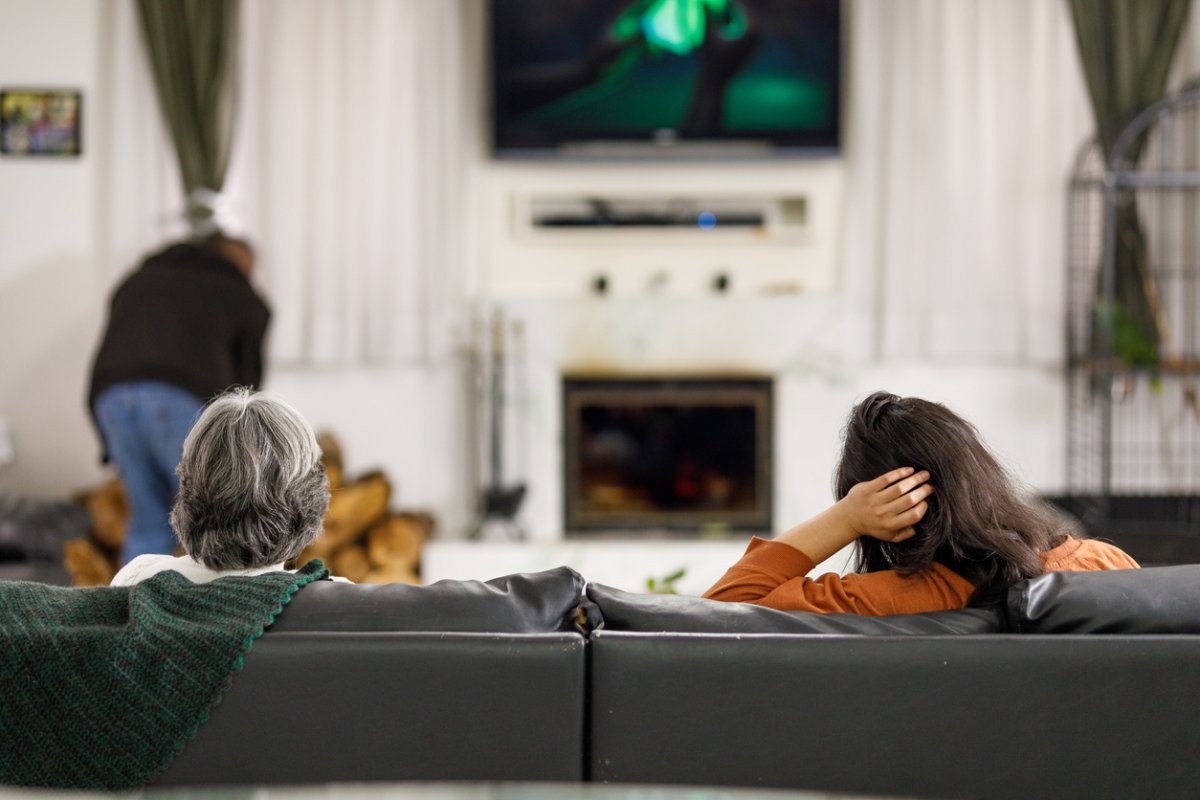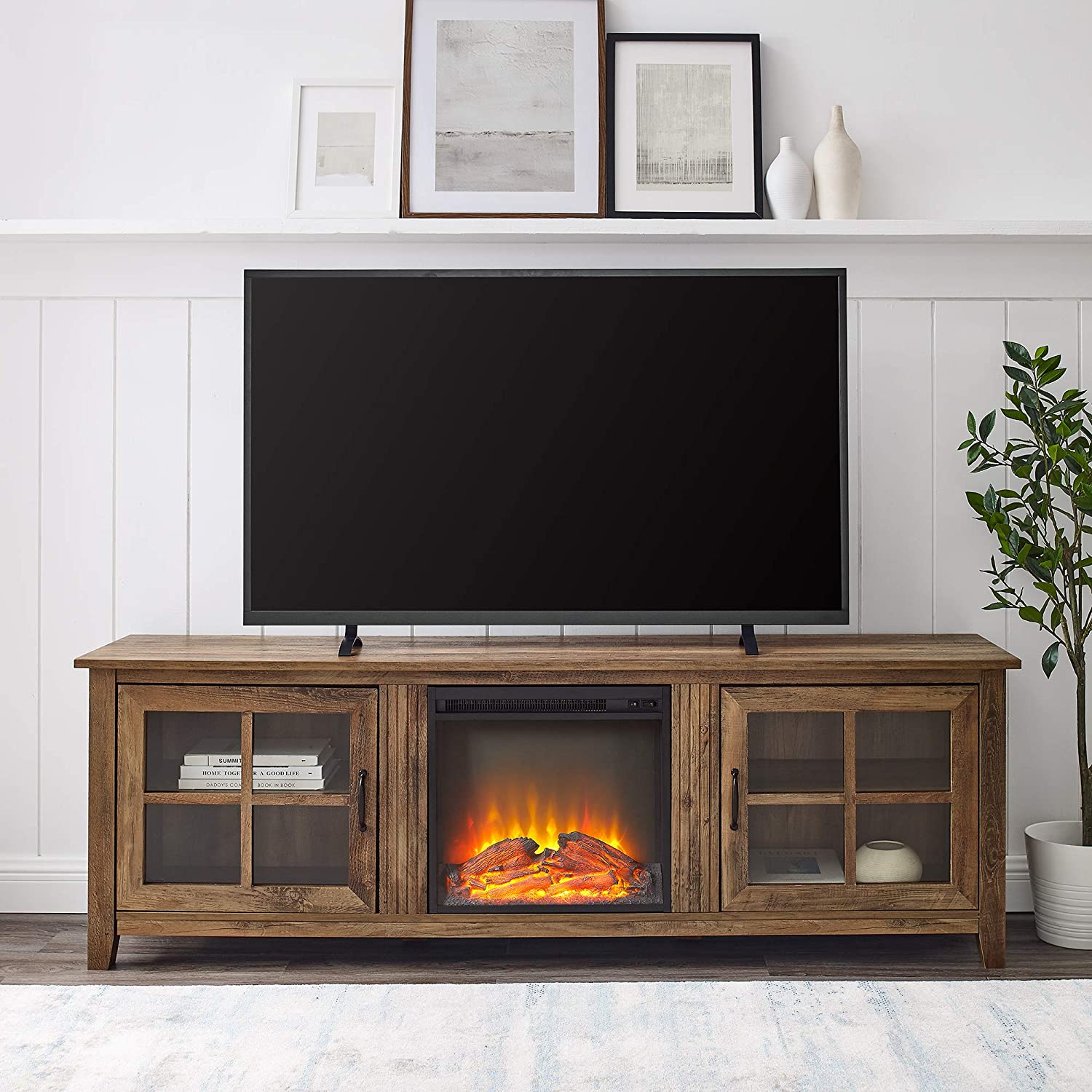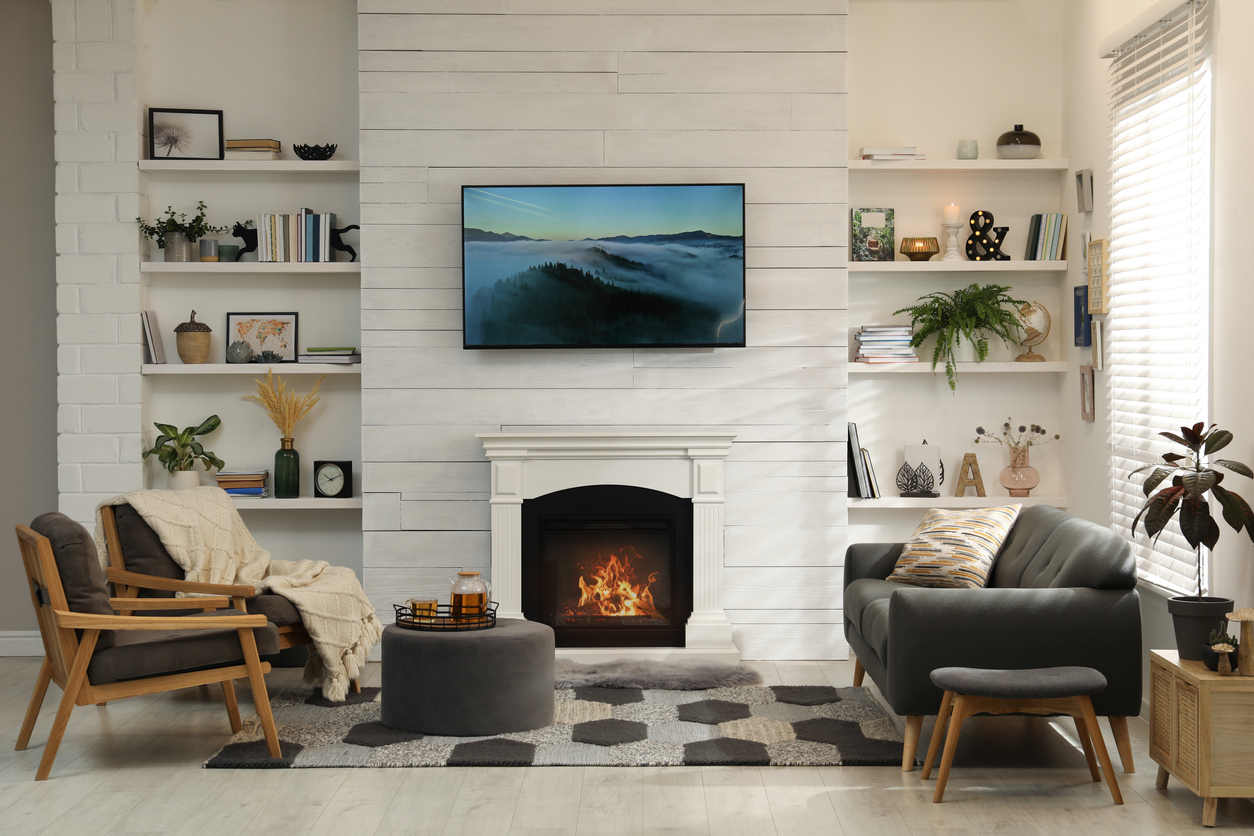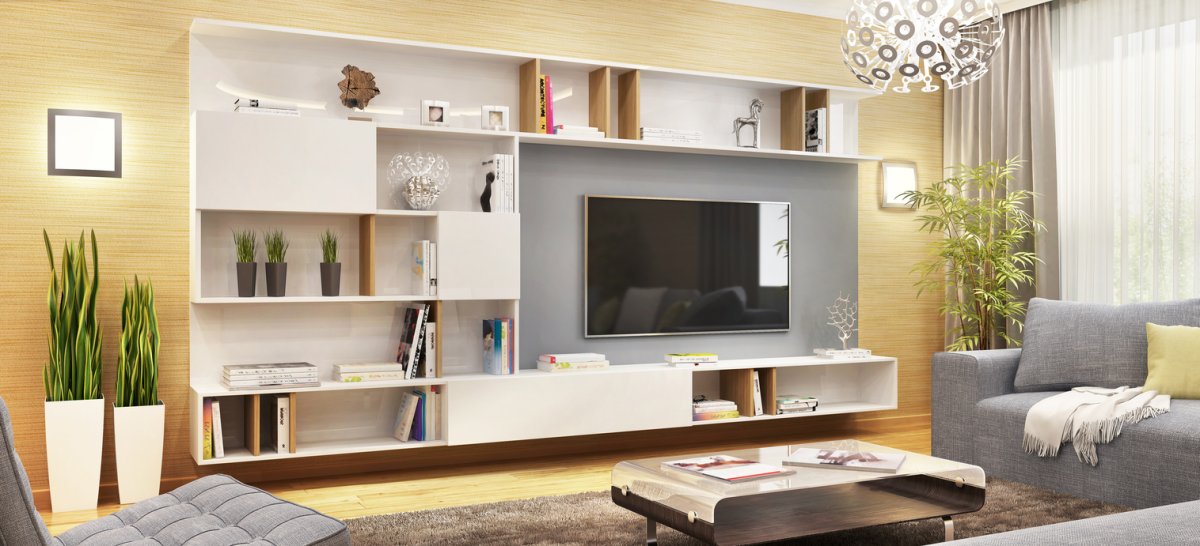

We may earn revenue from the products available on this page and participate in affiliate programs. Learn More ›
Q: I’d like to hang a new 65-inch TV over the fireplace in our family room, but my partner’s afraid that heat from the fireplace will damage it. Is it really a bad idea to mount a TV above a fireplace?
A: Talk about a hot-button issue! You’re not the first person to consider mounting a TV above a fireplace; in fact, home builders often install electrical and cable outlets over the mantel (the horizontal shelf above a fireplace) for just that purpose. But depending on the type of fireplace you have, it could very well be a mistake to hang your new television there—for reasons that go beyond the heat. Just ahead, find out why it might be best to choose a different location rather than hanging the TV above a fireplace.
Mounting a TV above a fireplace is generally not advised because excess heat and electronics don’t mix. The area above the fireplace is often warmer than other wall surfaces in your home. Consider this: A gas fireplace can generate 20,000 to 35,000 British thermal units (BTUs) of heat per hour. To put that into perspective, it takes approximately 15,000 BTUs per hour to heat an entire 1,400-square-foot house during a typical New England winter.
Heat rises, and even a fireplace with a blower directing hot air toward the center of the room will still allow some heat to escape upward, toward the TV above the fireplace. Still, a number of factors come into play. The farther the fireplace mantel extends away from the wall, the more it will deflect heat from the above wall and TV. In addition, some fireplaces produce less heat than others, and when they’re combined with a good blower, this prevents the wall above the fireplace from getting too warm.
You may be able to mount a TV above an electric fireplace, which typically generates less excess heat than a gas unit.

Some electric fireplaces are for ambience only and don’t produce any heat at all. Others, however, produce a moderate amount of heat—less than 5,000 BTUs per hour. Although that’s not as hot as a gas fireplace, can heat from an electric fireplace damage a TV nonetheless? It depends, but the short answer is yes. Extended exposure to high heat can potentially cause dead pixels and melted components in televisions. To be sure a TV above a linear fireplace will be safe, first perform the thermometer test described below to determine if the wall gets too warm.
Some freestanding electric fireplaces are designed for the very purpose of positioning a TV on top of a shelf built over the firebox, such as the Walker Edison fireplace TV stand, which was picked as the best choice for large TVs in our guide to the best electric fireplace TV stands. This stand is a safer choice than mounting a TV above a gas fireplace, with its built-in electric fireplace generating only 4,600 BTUs per hour at its highest setting.
Only mount a TV above a fireplace if temperatures in that spot do not surpass 100 degrees Fahrenheit.
You may have better luck with a fireplace that produces less heat, features a deep mantel, and is equipped with a strong blower. Before mounting a TV above any fireplace, though, complete this simple thermometer check:
- Tape a thermometer to the wall in the approximate center of where your TV might hang.
- Start the fireplace and let it run for several hours.
- Check the thermometer.
If the temperature reaches or exceeds 100 degrees Fahrenheit, the area above your fireplace is too hot to safely accommodate a TV. If the temperature remains at 100 degrees Fahrenheit, the TV should be safe above the fireplace; however, you still might want to rethink hanging it there for the reasons explained below.
Heat damage from mounting a TV above a fireplace could void the product’s warranty.

TVs cost a pretty penny, and if yours goes on the fritz soon after you buy it, you’ll want to call a service technician to fix it. If the technician discovers signs of heat damage, however, the manufacturer will often refuse to pay for the repairs, even if the TV is still within its warranty period. Does mounting a TV above a fireplace void the warranty, then? Read the warranty’s fine print; some manufacturers specify that the simple act of mounting the TV over a fireplace is enough to void it.
Watching a TV that’s mounted too high over a fireplace can be a literal pain in the neck.
If you’ve ever had to sit in the front row of a movie theater, you probably left with a kink in your neck from looking up at the screen. Similar discomfort can occur if your TV is mounted above a fireplace, which is a higher-than-usual height. The most comfortable angle for viewing a television is when the bottom third of the TV is at eye level. If you watch TV from a recliner that’s tilted backward, you may not develop a sore neck, but those who are sitting upright will likely suffer some discomfort after watching for a few minutes.
So how high should a TV be above a fireplace? The optimal TV hanging height for most setups puts the center of the screen at 42 inches from the floor. Most traditional fireplace mantels are between 4 and 5 feet tall. This means a TV should be mounted as close to the top of a mantel as possible, but that places it high enough to be uncomfortable and low enough to potentially look awkward. Accounting for the average home ceiling height of 8 feet and the minimum distance between a fireplace and TV required to keep the screen centered between the mantel and ceiling, many TVs above fireplaces may be mounted so high as to put the center of their screens 75 inches off of the floor. That’s almost 3 feet too high!
The image on the screen isn’t optimal when viewed from an angle.
While less of an issue for LED TVs, LCD screens are notorious for being difficult to see from an angle of more than 30 degrees from horizontal. If you mount the TV flat against the wall above the fireplace and sit on a sofa or loveseat, you’ll be viewing the screen from an angle. The greater the angle, the worse the picture quality becomes. A viewing angle of no higher than 15 degrees is acceptable.
If you have to mount your LCD TV on the upper section of any wall, it’s a good idea to use a mount that swivels, such as the Echogear full-motion TV mount, which allows you to angle the screen downward for viewing and then push it flat against the wall when it’s not in use.
Think creatively when figuring out a spot to mount your TV.

Even though positioning a TV above the fireplace isn’t advisable, no one says you’re limited to situating a large TV on a small media console. The following ideas will help you think outside of the box for where to place the TV.
- If you have a window that’s wider than your TV, consider hanging the TV in front of the window. Lined curtains can create a backdrop and block light from the street from entering the window.
- Surround the TV with shelving to create an “entertainment center” look. Install cabinets below (providing a spot for the TV to sit) and build shelves above and alongside the TV to help integrate it into the overall look of your room.
If you still opt to mount a TV above the fireplace, you may find your TV bigger than the fireplace and wider than the mantel. Although screen sizes have increased significantly over the decades, a general rule of thumb is that a TV should be around 6 to 8 inches narrower than the fireplace below it at minimum.
